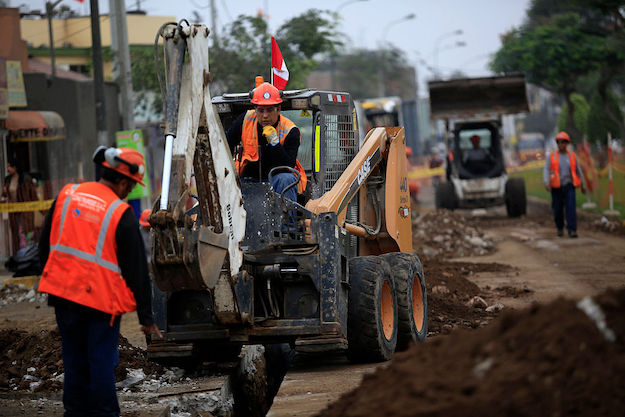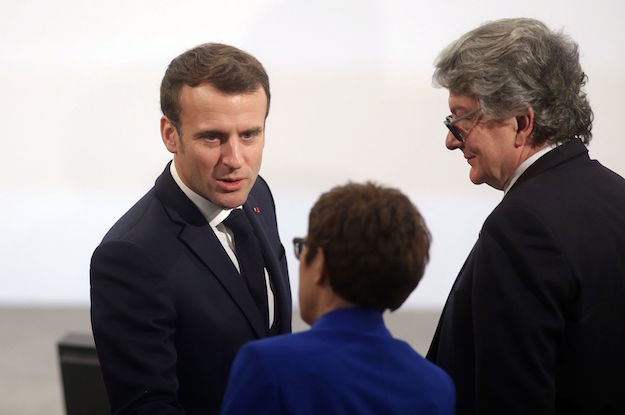Correction appended below
The Inter-American Development Bank’s (IDB) board of governors will pick the organization’s next president in 2020. Traditionally, the selection of the president has been decided outside the public’s view by a few large stakeholders. But given the IDB’s importance both for the U.S. and for member countries in Latin America – and particularly after a tumultuous year in the region – the governors should instead debate a broad slate of candidates early and out loud.
The IDB was conceived as part of the greater United Nations system, but is a stand-alone bank and serves only the Americas. It is funded by 48 governments, and loans $13 billion annually to 26 countries for infrastructure, health, education, crime prevention, economic growth, energy, and environmental projects. Part of its work includes an arm that lends to private companies for large-scale infrastructure and helps crowd-in external private financing and unlock local investments. A smaller arm invests in scalable and innovative projects.
The IDB’s work also improves regional security, reduces incentives for irregular migration in every direction, and helps the U.S. increase its exports. The bank will be needed to help rebuild Venezuela, and has been instrumental in recent development gains in Colombia and elsewhere. It is the largest donor to Haiti’s reconstruction, and is a credible third party supporting Central American governments in their efforts to ensure that their countries are places where people want to stay.
But in Washington, the IDB remains underappreciated. As its U.S. representative on the board of directors from 2015-2018, I did not do my job well enough in articulating the IDB’s value. In Latin America, by contrast, the IDB is genuinely looked to not only for financing, but also independent technical credibility, research, expertise, and convening power. In light of recent social upheaval in much of the region, the IDB can provide a source of policy solutions free from political infighting.
How much does this cost the United States? In fact, the IDB is a net moneymaker for the U.S. taxpayer. On average over the last 15 years, the IDB has given more to federal and state coffers than it has received. Each year, millions in tax revenue is generated by the approximately 750 U.S. citizens who work at the bank’s Washington headquarters. This, combined with tax revenue from U.S. businesses that provide the IDB with about $150 million in goods and services annually, more than offsets the average annual contributions to the IDB from the U.S. Although the U.S. has a 30% stake in the bank, making it the single most influential shareholder, most of the costs of running the organization are covered by loan interest and fees from member countries’ borrowing. In short, the IDB serves U.S. interests in the region while costing nothing. As a result, since inception, the bank has received consistent congressional support from Republicans and Democrats alike.
The IDB thus needs a dynamic global leader with credibility across the Americas who can navigate both high-brow finance and low-brow Washington politics. Whoever is selected as president should not be chosen through a closed-door deal among the U.S., Argentina and Brazil. Instead, the IDB governors should engage in a systematic process to vet and evaluate each candidate on their ability to address the challenges now facing the Americas as well as be effective in Washington. The candidates should also be able to lead inside complex multilateral fora and across the globe, given that the shareholders of the IDB include European countries and that financing in the region is now a global game, particularly given recent activity from China.
Discussion of the next president will begin in earnest in March 2020, at the IDB’s annual governors’ meeting in Colombia, with a selection expected by September. But hushed conversations are already well underway. Argentina, Brazil and Mexico are rumored as favorites to send a representative to replace the highly effective current president Luis Alberto Moreno, a Colombian. But there is nothing barring a candidate from a smaller, Central American, or Caribbean nation from taking the helm – though that would require support from the U.S., whose shareholding position gives it a de facto veto thanks to its ability to block a quorum at governors’ meetings. (For its part, the U.S. traditionally occupies the seat of executive vice president.)
A non-exhaustive, unconfirmed, and unendorsed list of potential candidates whispered either by their governments, third parties, or the candidates themselves includes: Argentine Gustavo Béliz; Bolivian Augusto López-Claros; Brazilians Maria Silvia Bastos Marques, Roberto Campos Neto, and Murilo Portugal; Chilean Felipe Larraín; Costa Ricans Laura Chinchilla and Rebeca Grynspan; Ecuadorean Richard Martínez; Honduran Marlon Tábora; Mexicans Alicia Bárcena, José Ángel Gurría, Graciela Márquez Colín, José Antonio Meade, and Alejandro Werner; Panamanian Isabel de Saint Malo; and Salvadoran Juan José Daboub.
Between now and March, this list should double in length and include additional qualified candidates from smaller countries. As the citizens of the region demand greater inclusion and transparency for themselves, the governors of the IDB should do the same. The Americas and the IDB are too important for anything less.
A previous version of this article misidentified Felipe Larraín.
—
Lopes is a senior adviser at the Center for Strategic and International Studies and was the U.S. Executive Director to the IDB from 2015-2018.








